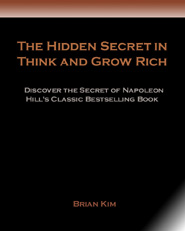The ability to make quick, good, decisions easily – it’s not something many can do.
There’s the trap of needing ALL the information first beforehand to make the decision – the information overload trap as I like the call it.
Then there’s the trap of “What if?”. What if this happens or what if that happens as a result of the decision? In essence, the trap of fear.
And the most worst trap of all – continued distrust in oneself. When you don’t trust yourself to make the decisions you need to, it’s really hard for others to trust in you simply because they see that even you don’t really trust yourself.
In order to become decisive, we must step back to see how things fit in the BIG picture.
If we continually zero in on the small part of the picture in terms of one decision, it becomes very hard to develop the habit of decisiveness.
In a nutshell, the “cycle” of decisiveness can be described as follows:
Take all the relevant information you need to make a decision, make a crystal clear decision based on crystal clear justifications, act on it in the heat of the moment to affirm it, let go of any emotional attachment to the decision, continue to act on it, observe what happens as a result neutrally, and continue the cycle to make more decisions accordingly.
The first part of the cycle is self explanatory. Making a decision without the relevant facts is simply not a good thing to do. The real question is how much relevant information do you need? We’ll get to that in just a bit.
The second part is crucial. You must make a crystal clear decision, one that’s clear enough to the point that you know exactly what you have to do next to get to work on implementing your decision and what’s more, you need crystal clear justification as well. The crystal clear decision is there so that you’ll know exactly what you need to do next. The crystal clear justification is there so that it provides you with that “spark” to implement it.
This leads us to the third part of the cycle – acting in the heat of the moment to affirm the decision you just made. Decisiveness/action should be two sides of the same coin. If action isn’t taken, you just open the door for more mental laps to be taken on the “Should I or should I not?” decision course. When you take advantage of the spark that comes with making a decision by either carrying out the entire decision then and there, or at least taking some form of action on it on the spot if it’s a bigger decision that requires more time and effort to implement, you’re actually making a true decision.
The next part of the cycle is crucial because if you don’t do this, you will forever fear decision making. You must be able to step outside yourself and look at the results of your decision as just that – results. Nothing more, nothing less. The minute you start berating yourself for making a “wrong” decision because you see “bad” results, all that trust you deposited and more, will be taken away from you, reducing your desire and ability to make any further decisions in the future.
Just observe neutrally and more importantly, realize that you can always change things later on down the road if they don’t turn out the way you expected it.
With the results you see, you have more relevant information to use to make another decision and the more decisions you make, the more actions you take, which lead to more results, which lead to more relevant information, which leads to even better decisions, etc.
The cycle starts engaging beneficially in your favor.
Realize you DO need to screw up. You need to feed more relevant information into the decision making capability mechanism that lies inside your head so it knows what to do later on down the road.
If you don’t realize your necessity to screw up, you’ll never pull the trigger because you’re just focused on the wrong things that might happen with the one decision you make instead of looking at the bigger picture where you’ll encounter the many, many more decisions that you’ll need to make in the future.
Remember to view everything in terms of the big cycle:
The more decisions you make, the more actions you take. The more actions you take, the more results you see. The more results you see, the more relevant information you get. The more you relevant information you get, the better decisions you’ll be able to make and the cycle continues on and on and on and on.
And what most people don’t see that goes behind the scenes of cultivating the habit of decisiveness:
Trusting that you’re making the right decision based on the present situation.
And knowing based on what happens as a result, that you can trust yourself to make the right decisions along the way to correct it.
That’s when you’ll realize you’ve truly cultivated the decisiveness habit as the world knows it.









